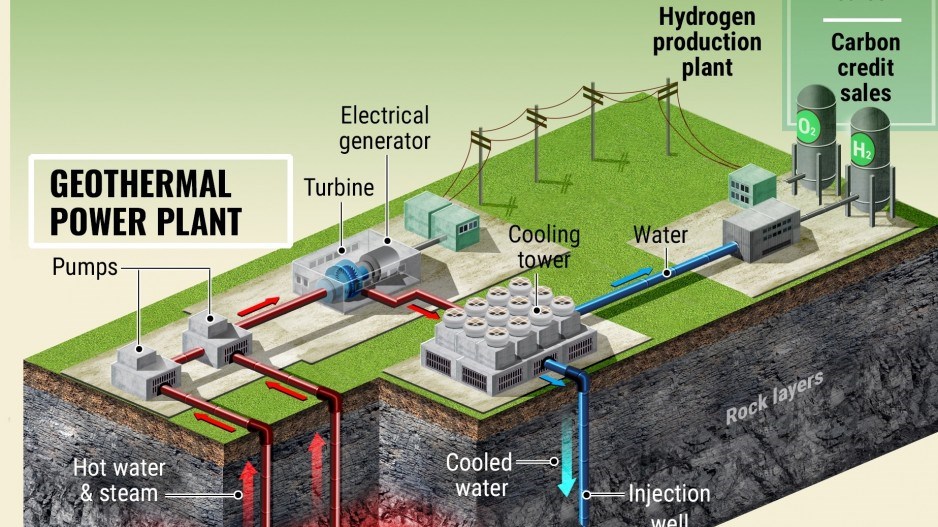Meager Creek near Pemberton has long been known as one of B.C.’s best potential geothermal energy assets, but developers have poured millions down drill holes over the years, only to walk away.
But a new Alberta company thinks that producing green hydrogen from geothermal power may make the economics work.
Meager Creek Development Corp. has acquired the leases for Meager Creek, northwest of Pemberton, with the aim of building a geothermal power plant and an electrolyzer to produce green hydrogen from water and electricity.
The company behind the Meager Creek Development is Terrador Energy, which involves the principles of Remedy Energy Services, WellDunn Consulting and several other service companies in the energy space.
Richard Hawker, president of Remedy Energy Services, said the company is looking at producing 9,000 kilograms of hydrogen per day. He said the capital coast of the project is about $200 million.
Green hydrogen is made from water and electricity, whereas grey hydrogen is made from natural gas, and blue hydrogen is made from natural gas, but with carbon capture and storage.
As a renewable, zero-emission power source, geothermal energy has one major advantage over wind and solar power: It’s not intermittent.
Geothermal power is generated with steam-driven turbines using hot water from aquifers where the Earth’s magma is relatively close to the surface – typically in fault zones and areas with high volcanic activity or hot springs.
Once water is tapped from hot water aquifers, it can drive steam turbines to generate electricity around the clock.
The problem with geothermal energy in Canada has been its up-front capital costs and the risk involved. It costs $4 million to $10 million to drill a test well, and several wells may have to be drilled before a reservoir with the right temperatures and flows is found.
The last developer to try making geothermal power work at Meager Creek – Western GeoPower Corp. – spent around $30 million drilling test wells, only to conclude the project was not economically viable.
In B.C. there is the additional problem that B.C. does not need additional clean power, since it is actually expected to have a surplus of hydro-electric power. In other words, there’s no market in B.C. for more non-emitting electricity.
Producing hydrogen would be a value-added component that “keeps us out of the electricity market,” Hawker said, “but we have the optionality of being in it.”
Hawker said a lot has changed since developers last attempted to make geothermal power work at Meager Creek. Geoscience BC, Natural Resources Canada and the Geological Survey of Canada have produced a lot of valuable research that helps de-risk the exploration activity, Hawker said.
“A lot of the academic institutions around Western Canada… have spent a lot of intellectual capital, and real capital, on this thing in the last few years,” he said. “We used a lot of that.”
He added: “The economic climate is different for green projects. They’re – we hope – easier to fund.”
The expertise and technology in deep and horizontal well drilling has also improved, thanks to the shale oil and gas industry.
“We will be applying a lot of that to Meager Creek,” Hawker said. “Most of us -- the senior people at Remedy -- have been involved in horizontal wells since the inception of the technology back in the early 80s.”
Hawker said the company plans to begin drilling wells in about a year from now, and be in production by 2025.




